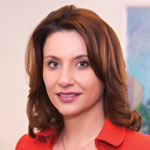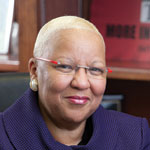A modern university such as UMBC thrives on excellence in teaching and innovation in research.
We all know good teaching when it touches our lives and the lives of those close to us. But research poses difficulties in definition and assessment. The work done in UMBC’s laboratories and libraries often takes years to touch the lives of everyday citizens. How do we approach it?
As the UMBC Magazine team applied the finishing touches to this issue, I noticed that all three of our main features in the Winter 2011 edition touch on the role of research in the university.
Our story by Anthony Lane on Yonathan Zohar and his research on fish farming at the Columbus Center in downtown Baltimore is the sort of effort that most readily comes to mind when we think of academic work’s intersection with the larger world. Zohar and his colleagues in UMBC’s Department of Marine Biotechnology are confronting the global problem of depleted oceans with a combination of biological research and the development of new technologies that reproduce breeding environments. It’s research that may reshape our future.
Research can also bring the past much closer to our present. Scott McLemee’s article on associate professor of history Anne Rubin not only lays out the scholarly excellence of her research on the Civil War, but also her position as one of the pioneers in what’s now known as the “digital humanities.” Rubin’s work uses many of the possibilities of the Internet – including videos and interactive maps – to not only make her research on America’s greatest calamity more vivid, but also bring it to a new generation of scholars and students.
Our cover story for this issue examines dance at UMBC, and some might wonder just how dance is research. But at UMBC, there’s already an event each year that explicitly links academic research to creative endeavors such as choreography and performance. Known as the Undergraduate Research and Creative Achievement Day (or URCAD), it celebrates undergraduate research (the best of which is published in the annual UMBC Review) and the work of students who pursue the arts with rigor and talent.
This year’s URCAD is Wednesday, April 27, 2011. UMBC’s president Freeman A. Hrabowski, III says that it “is one of the best academic events of the UMBC year because it reflects the strength of our academic program, including the strong relationships between faculty and students, the rigor of research here, and the broad enthusiasm for, and talent in, the creative arts on our campus.” Check out the schedule of events at www.umbc.edu/undergrad_ed/research/URCAD/index.html.
— Richard Byrne ’86
Tags: Winter 2011



